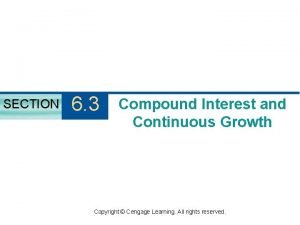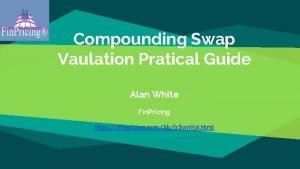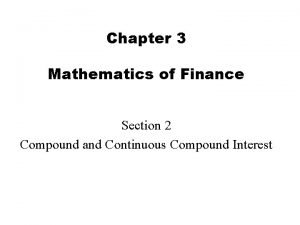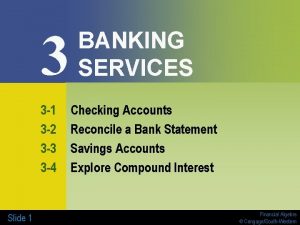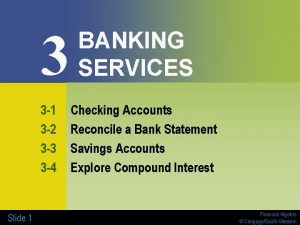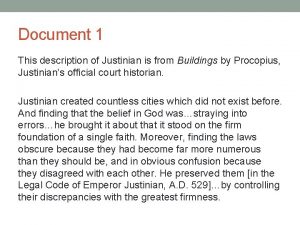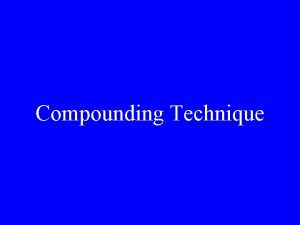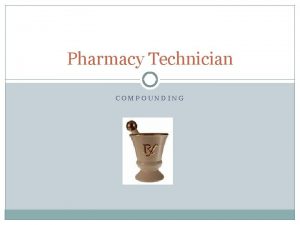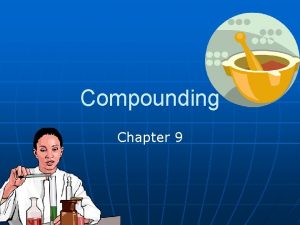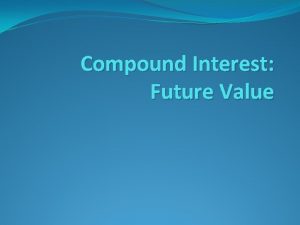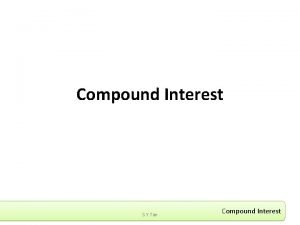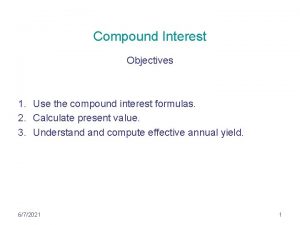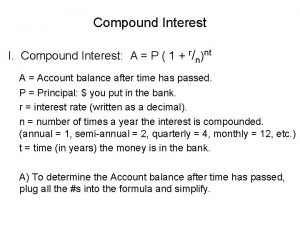Continuous Compounding Compound Interest Explained The Power of










- Slides: 10

Continuous Compounding Compound Interest Explained The Power of Compounding 1

WARM - UP 1. Joey invests $4, 500 in an account that pays 1. 5% annual interest, compounded quarterly. What is his balance, to the nearest cent, at the end of 10 years? 1. How much more does $1, 000 earn in nine years, compounded daily at 4%, than $1, 000 over nine years at 4%, compounded semiannually? 2

Continuous Compounding Vocabulary CONTINUOUS COMPOUNDING: A method of calculating interest so that it is compounded an infinite number of times each year rather than being compounded every minute, or every microsecond. EXPONENTIAL BASE (e): The exponential base e is an irrational number which is a non-terminating, non-repeating decimal with an approximate value of e ≈ 2. 71828. . 3

Continuous Compounding interest daily makes money grow more quickly than simple interest. It is possible to compound interest every hour, every minute, even every second! 4

Continuous Compounding Continuously Compounded Interest is a great thing when you are earning it! Continuously compounded interest means that your principal is constantly earning interest and the interest keeps earning on the interest earned. 5

Continuous Compound Interest Formula B = pert where 6 B = ending balance p = principal e = exponential base r = interest rate expressed as decimal t = number of years Financial Algebra © Cengage Learning/South-Western

EXAMPLE 1 If you deposit $1, 000 at 4. 3% interest, compounded continuously, what would your ending balance be to the nearest cent after five years? 7 Financial Algebra © Cengage Learning/South-Western

EXAMPLE 2 Craig deposits $5, 000 at 5. 12% interest, compounded continuouslyfor four years. What would his ending balance be to the nearest cent? 8 Financial Algebra © Cengage Learning/South-Western

EXAMPLE 3 Patti wants to deposit $1, 000 and keep that money in the bank without deposits or withdrawals for eight years. She compares two different options. Option 1 will pay 2. 7% interest, compounded quarterly. Option 2 will pay 2. 4% interest, compounded continuously. a. How much interest does Option 1 pay? b. How much interest does Option 2 pay? 9 Financial Algebra © Cengage Learning/South-Western

PRACTIC E Pg. 154 #4 -10 10 Financial Algebra © Cengage Learning/South-Western
 Compound interest problem example
Compound interest problem example 0 965
0 965 Compounding swap
Compounding swap How to calculate continuous compound interest
How to calculate continuous compound interest 3-6 continuous compounding answer key
3-6 continuous compounding answer key 3-6 continuous compounding
3-6 continuous compounding Present continuous future
Present continuous future Past simple future simple
Past simple future simple How is justinian’s power explained?
How is justinian’s power explained? What is real interest rate and nominal interest rate
What is real interest rate and nominal interest rate Nominal rate
Nominal rate
